Schnitzel, beloved of gambolling nuns, is one of those dishes that's mysteriously more than the sum of its parts. With the (very) honourable exceptions of chicken kiev and scotch eggs, I haven't eaten much breaded meat since leaving school, yet somehow, this simple classic, like its Milanese cousin, manages to be both elegant, and utterly satisfying. After this week, it might just be one of my favourite things.
The meat
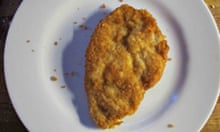
Veal is the traditional choice in Vienna itself, though in the countryside, cheaper, more widely available pork is popular. Schnitzel can, of course, be made from almost any meat that comes in pieces large enough to fit the bill, and I do try a chicken schnitzel from New York Times food writer Melissa Clark, more for her slightly unusual method (of which more later) than for any hope of culinary revelation from the poultry itself. Of all the schnitzel I try, it reminds me most of the children's menu; chicken just doesn't have the same depth of flavour as pork or veal.
Pork schnitzel, which the Carinthian-born Wolfgang Puck fondly recalls from the Sunday lunches of his childhood, is undeniably good; juicy and flavourful. But the veal I try is something else; the milky flavour works wonderfully with the buttery breadcrumbs. If you can find British rose veal (it's available online if your butcher or supermarket doesn't carry it), it's well worth the investment here.
Veal in this country is often just sold under the label "escalopes", but look for a slightly fattier cut if possible – Austrian restaurant Boopshi's recommends loin, topside or rump, and Vienna restaurant Figlmüeller favours top loin for its tenderness. Escalope or not, you'll need to beat it as thin as possible; Michelin-starred Austrian chef Kurt Gutenbrunner suggests 3mm as the figure to aim for, while Figlmüeller prides itself on hammering each and every schnitzel out to 30cm diameter. This means starting with a larger piece of meat than I'd usually serve at home, but you get the general idea – too thick, and the crumbs will overcook before the meat is done. Just don't hammer it into cobwebs.
The coating

According to the writer Joseph Wechsberg, a good wiener schnitzel should boast breading "so dry you could sit on it without having a fat stain on your pants". Now, Wechsberg ate at some of the finest restaurants of pre war Europe, so I'm loth to argue with him and his impeccably clean pants, but my experience suggests you can take this too far. For a start, while he would surely have frowned on Simon Hopkinson and Lindsey Bareham's fresh white breadcrumbs, which give The Prawn Cocktail Years schnitzel a softly greasy (and utterly delectable) coating, I can't believe he would have embraced the Japanese panko crumbs recommended by Puck. They're just too dry and crunchy. Dry breadcrumbs (easy to make at home by putting fresh crumbs in a low oven for half an hour or so, then blitzing them up again) are a happy compromise; crisp, without being abrasive. Boopshi's recommends using crusty kaiser rolls, which aren't easy to come by here, but a standard white loaf seems to do the trick.
It's not just about the crumbs – the veal is rolled in flour, to help the coating stick, and then beaten egg too. Adding cream to the egg layer, as Gutenbrunner suggests, may be unorthodox, but it gives his coating a lovely richness missing from the more puritan water and egg, or water and oil versions of Puck and The Prawn Cocktail Years. It's not essential, but it is nice. Boopshi's chills the floured and egg-washed schnitzels for half an hour before rolling in breadcrumbs and frying. This does give a slightly thicker, more robust coating, but it's not really necessary; it sticks fine without it. You don't need to add any spices to the coating, apart from the usual seasoning; Clark uses cayenne pepper and nutmeg, which are lovely things, but a good schnitzel doesn't need them.
The cooking
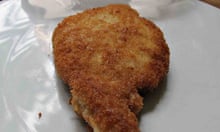
Most recipes shallow-fry their schnitzel, but Boopshi's boldly chucks them in the deep-fryer instead. This presents two problems; it makes them super crisp, which, as I've mentioned, is not what we're after here, and it excludes the possibility of using butter, which, I think, is a must. Lard is said to be traditional, but though I try it, and straight vegetable oil, I find the richness of butter unbeatable. Obviously frying it in just butter would present practical problems, as the schnitzel requires more fat than a mere splash, and butter burns easily. You could use a great dollop of clarified butter (either make your own, or buy from supermarkets or Asian grocers – look for "cow ghee"), but a mixture of that and neutral oil imparts flavour at less expense. Clark reckons the secret to great schnitzel is to "trap air in the crust when you cook the meat by moving and shaking the pan". Her recipe swirls the pan "so oil cascades over the top of the cutlet in waves". It works – the coating is noticeably lighter.
Serving
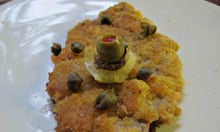
The Prawn Cocktail Years goes for an elaborate garnish of pimento-stuffed olives, capers, anchovies, hard-boiled egg and lemon, but, wonderfully retro as this looks, a wedge of lemon to cut through all that butteriness is quite sufficient, unless you're cooking for a special occasion. Continue the light theme by serving it with potato salad, thinly sliced cucumbers and red onions, or a simple green salad. A fried egg, capers and anchovies will turn it into a schnitzel à la Holstein, a mushroom sauce makes it a jager-schnitzel ... but try it solo first. I doubt you'll miss the extras.
The perfect wiener schnitzel
(Serves 2)
2 escalopes of British rose veal (or pork)
Salt, to season
Pepper, to season
2 eggs
2 tbsp double cream
Flour, to coat
50g dried white breadcrumbs (good ones – get instructions on how to make them with fresh bread)
Vegetable oil, to fry
25g clarified butter or ghee
1 lemon, cut into wedges, to serve
Put one of the escalopes on a chopping board, cover with greaseproof paper, and beat out as thinly as you can without making holes in it. Season both sides well. Repeat with the other.
Beat the eggs lightly with the cream in a wide, shallow bowl. Put a good handful of flour on a plate, and tip the breadcrumbs on to another plate.
Heat 1/2cm oil in a deep, wide frying pan until a breadcrumb sizzles and quickly browns. While that's heating, dip the escalopes in turn in the flour, egg and lastly the breadcrumbs, making sure they're evenly covered with each layer, but being careful not to press them into the breadcrumbs too hard.
Add the butter to the pan and once foaming, drop in the escalopes (if they're too large, you may have to do them in batches). Cook until golden brown on the bottom, swirling the pan constantly to cascade oil over the top.
Turn over and repeat – once both sides are golden (a matter of minutes), the schnitzel are ready. Blot quickly with kitchen paper and then serve immediately with lemon to squeeze over.
Wiener schnitzel – a Mittel European classic that deserves a revival, or boring breaded stodge? And, if you're a fan of the schnitzel, or its relative the Japanese tonkatsu, the American chicken-fried steak, or indeed, the Teesside parmo, what do you serve them with? Would anyone like to speak up for Maria and her spätzle?
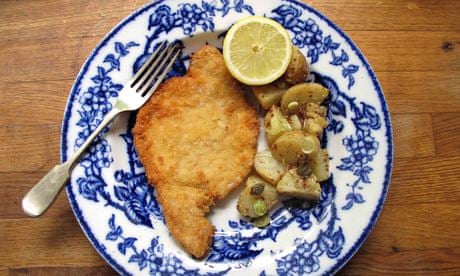
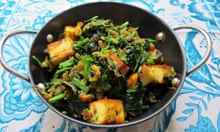
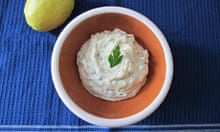
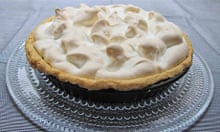
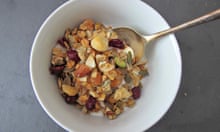
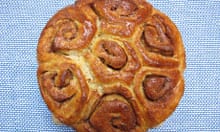
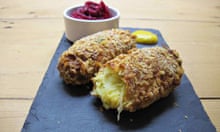
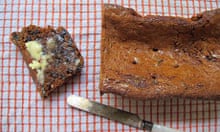
Comments (…)
Sign in or create your Guardian account to join the discussion